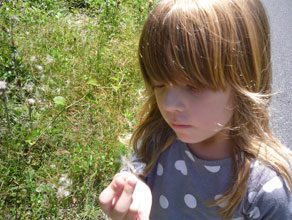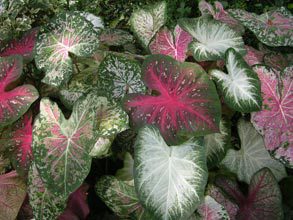 Whew! How did we ever make it through? I moved down here from the north because I didn’t want to spend 3 months of every year, stuck in the house not gardening because of the weather. Little did I realize I would be doing the same thing here . . . only the months would be different.
Whew! How did we ever make it through? I moved down here from the north because I didn’t want to spend 3 months of every year, stuck in the house not gardening because of the weather. Little did I realize I would be doing the same thing here . . . only the months would be different.
Other things down here are different, too. I am told that “Ladies in the south don’t sweat . . . they glisten.” They glisten? Seriously? In previous generations, southern ladies pretty much stayed indoors and always took a parasol when they had to go outside. Lacking air conditioning and deodorants, they would dust themselves with talcum powder so that by the end of the day, they resembled iced teacakes. I read that somewhere.
Back then, a lady’s idea of gardening was strolling around the garden, fully dressed with a pretty sun hat, carrying an English flower trug and a pair of secateurs in gloved hands. Ladies didn’t dig then. We do now. My own summer gardening look is more chain-gang than Vogue.
This summer, I looked in dismay as I watched my precious plants droop and gasp; hoping to stay alive until the sun went down. Some just didn’t make it. Nowhere does Darwin’s survival theory seem to be more pertinent than the south in the summer. Admittedly, though, the north in the winter is pretty pertinent, too.
But this past summer seems to have been an extreme one. Before our summer turned into a rain forest, my lovely, mature Loquat tree, crying out for water, dropped all its leaves so that its energy would be devoted to staying alive instead of growing. I should have been more attentive when the leaves started to drop and been there with a soaker hose. I wasn’t and it died. My fault.
Sometimes, though, even supplemental water won’t counter the relentless heat that just doesn’t abate, even during the night. Summers in the north can get really hot, too, but their nights cool down. We had days, weeks even, where the temperature at night didn’t fall below 80, and 90+ degree days were the norm. Plants stop growing and go into a kind of semi-dormancy in that weather. That’s why crops stop setting fruit and you see so few flowers in mid-summer gardens. The plants never have a chance to ‘rest’ from constantly transpiring. Some die from simple exhaustion. And plants, too, can get sunburned.
So what can we do for them? The most important thing is to ensure that there is sufficient regularhydration. Don’t wait until they’re at death’s door to water. Midday droop is not uncommon or unhealthy in the summer; it’s just the plant’s way of conserving water and energy. However, if the droop is in the morning or evening, it usually is a signal that water is wanted.
Because the plants never rest, nutrients in the soil are rapidly depleted. Increase the frequency of fertilizer applications, but at a little less than the suggested strength. Tired and hungry plants are susceptible plants. (Aren’t we all?) Be on the lookout for insect or disease damage, and treat at once.
Wait at least until late fall before you transplant or add new shrubs, trees or perennial plants to your garden. Purchase them now if you must, but keep them out of direct sunlight and keep them watered until they go in the ground. And you know, of course, to water daily even then until they’re well established.
In spite of all that you do, it’s possible that you’ll still lose plants. Don’t despair. That’s gardening. And an opportunity to try something new in their place.
Summer heat is dangerous for humans, too. Especially if you’re in the group eligible for Social Security. One of the best heat-stroke preventatives is a kitchen timer. It’s easy to lose track of time when you garden, so on really hot days, put one in your pocket when you go outside and set it for no more than 30 minutes. When it rings, stop what you’re doing (and no, don’t finish weeding that row because by the time you reach the end, you’ll have forgotten it rang). Go inside to cool off for a few minutes and have a glass of water. And maybe a pickle or some chips. You need to replenish the salt you lost from all that ‘glistening’.
Well known garden guru, writer and former professor at the University of Georgia, Alan Armitage, used to give demerits to his students who worked outside in his ag classes without wearing a hat. And for heaven’s sake, don’t make it a baseball cap. They hold heat in and offer little protection from the sun. Alan is famous for his Tilly hat. Cute, isn’t he?
Loose fitting, natural fiber clothes are best. You already know about putting on sun block. And ladies, if you want to avoid a Farmer’s Tan, vary the length of the sleeves and necklines of your shirts when you’re outside. When you wear a sleeveless dress to a party, you want ‘White Shoulders’ to be your perfume, not your look.
So now that we’ve survived another summer, we can take a deep breath and enjoy the glorious days of autumn. Of open windows. Of sitting on the porch to watch the garden come alive again. Of sleeping without the noise of air conditioning. And of course, watching Hurricane Central on TV. But life is good.
Enjoy this brief relaxation while you can. The holiday season starts earlier every year. The witches, goblins and jack-o-lanterns have already invaded. And turkeys and jingle bells aren’t far behind.








